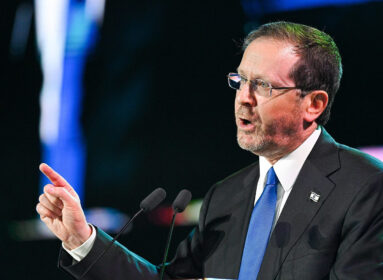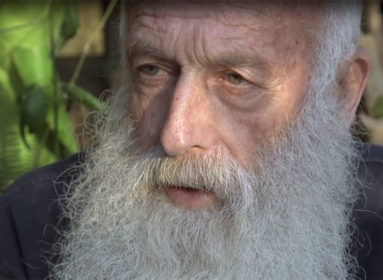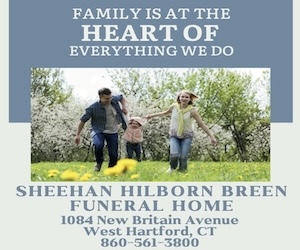
By Stacey Dresner
RIDGEFIELD – On Dec. 5, representatives from Ridgefield’s town government and each of Ridgefield’s town departments came together to learn how to combat hate.
The 50 individuals participated in A World of Difference, an Anti-Defamation League (ADL) program, which was held in light of antisemitic and racist graffiti found over the past year in the scenic and quintessential-New England town. “There have been several incidences in our community and there has been a general increase in concern within our community over the last year and a half,” said First Selectman Rudy Marconi. “Specific incidences of swastikas and racial slurs are what prompted the decision to embark on a program with the ADL.”
Antisemitic symbols were first found back in November 2016 at Ballard Park in Ridgefield. In March of this year a swastika and antisemitic and racist language were painted on the outside of Ridgefield High School. In both June and August, more antisemitic and racist graffiti was found at Ballard Park, including hateful graffiti painted on the park’s outdoor stage. A swastika was scratched into a desk at the high school this September, and another swastika was drawn on a classroom door at the high school on Nov. 21.
Concerned about these incidents, Rabbi Rachel Bearman of Temple B’nai Chaim in Georgetown, and Rabbi David Reiner of Congregation Shir Shalom met with First Selectman Marconi last summer.
“After the swastikas and graffiti happened in the park and on its stage, we started meeting to try to figure out how we could work to strengthen the community, what we could do to avoid incidents like this in the future and to respond proactively,” Bearman said.
Reiner added that the two clergy people stressed at the first meeting that this wasn’t just about the Jewish community.
“It was to say that this isn’t just about us, it is about our town and wanting Ridgefield to be a place that welcomes people from different backgrounds and celebrates that not everybody is all the same,” Reiner said.
“I think it was a good time for us to begin looking at this more clearly and to begin to focus our attention on implementing a program,” said Marconi. “So we started with the ADL, building the bonds for a stronger community.”
The three had already met with ADL Executive Director Steven Ginsberg and the Dec. 5 program was already planned when news of another swastika at the high school late last month came to light.
“The ADL programming was scheduled before this latest incident, so it was fortuitous that it was already scheduled and that we could all get together,” Bearman said.
The Dec. 5 World of Difference program, held at Ridgefield’s Leir Retreat Center, was attended by Ridgefield Town department heads, members of the Board of Selectmen, the Board of Education, and the Board of Finance, as well as all of the school principals and the Superintendent of Schools.
“We had incredible participation,” said Marji Shapiro, senior associate director of the ADL’s Connecticut office, who led the program. “They really showed up to learn and discuss. I was really very impressed with the amount of caring and determination everyone brought to it.”
The tagline of the ADL program was “Strengthening the Bonds of our Community.”
During the three-and-a-half-hour interactive workshop, participants broke up into pairs and “shared their own thoughts about what makes a community,” said Shapiro.
“I asked this question: ‘If this community were to get a million-dollar grant to create a community where everyone is respected, what would you do with it?’ The next thing I said, was, ‘I don’t have a million dollars, but what can you do anyway?’ It gets them thinking about action they can take,” Shapiro said.
The heart of the program is an ADL tool called the “Pyramid of Hate.”
“It’s a very important tool we use in almost all of our programs now, and it talks about where the seeds of hate begin. They begin in bias, stereotypes, comments and jokes,” Shapiro said. “If those things are not challenged, it grows to prejudice and discrimination, then violence, and that is where genocide comes from. We are not headed to genocide, but we are saying, that is where the seeds begin and that is where we have to cut it. We also ask, ‘How can people become allies and stand up for vulnerable groups in the community?’”
The Ridgefield participants got a chance to read about real people in Connecticut who have experienced various acts of hate depicted in the levels of the pyramid.
“That really wakes people up,” Shapiro said. “They say, ‘That happened in Connecticut?’ Telling stories and connecting is really one of the best tools.”
Marconi said that he felt it was important to bring town leaders from all areas together to discuss the issue.
“What I wanted to do is bring leaders of the community together because it is not often that you get department heads on the town side in a joint meeting with principals,” he said. “When you are broken down into pairs, you end up talking with people that you really didn’t know even though you both have been working in town for 20 or 30 years.”
Marconi said he found the “Pyramid of Hate” and what it can teach people about antisemitism and racism useful.
“The little things that are ignored most often can grow into eventual acts of violence, which hopefully we will never see,” he said. “But there is no question that a lot of us in everyday life would rather ignore those who project ideas of hate or racism. And since we don’t like [those messages] we would rather turn our back and walk away instead of confronting it by saying, ‘Ouch, that hurt. I don’t like that.’ If people heard that more often, then perhaps they would come to understand that that type of attitude and communication is not respected at all.”
Rabbi Reiner agreed.
“I think getting the leadership of the town to talk about it and to recognize how these symbols, though they may seem random or do not specifically target a synagogue, still have an impact and still need a response.”
Reiner also stressed that swastikas painted in a town park aren’t just a problem for the Jewish community. “Although it is felt more acutely by members of the Jewish community, it is something that impacts everyone.”
Besides the Dec. 5 program, the ADL also facilitated a program for Ridgefield High School’s tenth grade last week, called “Names Can Really Hurt Us,” about bullying. This is the third year the high school has held the assembly, which gives voice to targets of prejudice and bullying and teaches empathy to perpetrators and bystanders.
There are also plans to work on programs with the two local synagogues on dealing with antisemitism.
“This is way more than one typically sees in terms of a response,” Shapiro said. “I give them a lot of credit for their time and commitment, and for putting resources there.”
She added that these educational programs, whether held at schools or on the community level, are not designed to figure out why certain acts of hate occur, but to work on preventing them from happening again.
“What we always say at ADL is that the measure of any town, community or city is not that incidents happen there, it’s how they respond. Because they happen everywhere – in big cities and in little towns – everywhere,” she said. “The first level of response is the investigation, but ultimately you have to do something healing for the community.”








 Southern New England Jewish Ledger
Southern New England Jewish Ledger









